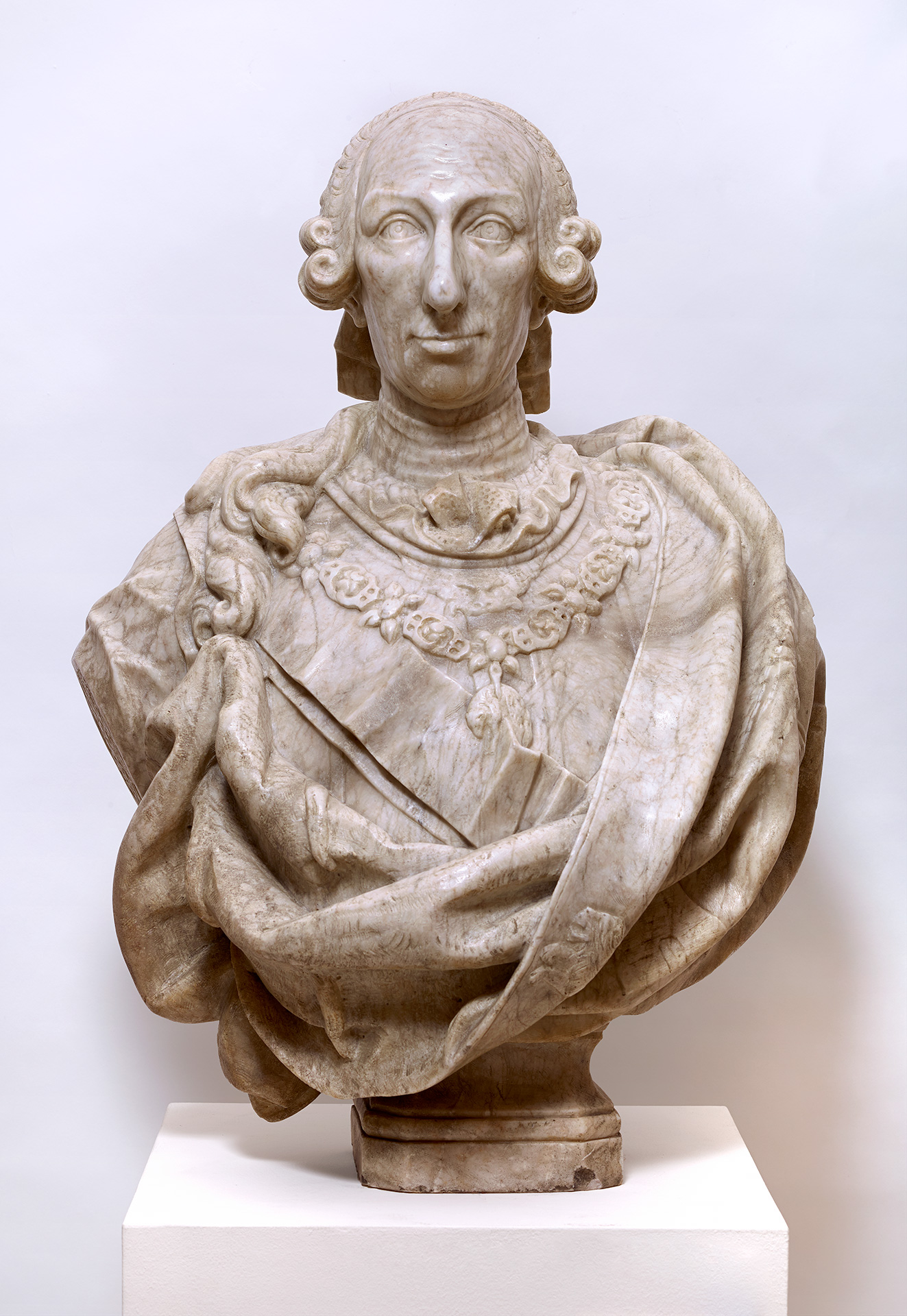
Juan Pascual de Mena (Villanueva de la Sagra, Toledo, 1707 – Madrid, 1784)
Charles III
1764
WORK INFORMATION
White marble, 77 x 56 cm; pedestal 11 x 19 cm
OTHER INFORMATION
Signed and dated on the right side, on the cloak: "D. Juan Pascual de Mena 1764"
This bust was carved in 1764 and therefore depicts Charles of Bourbon after he was crowned King of Spain. He had acceded to the throne following the death of his brother, Ferdinand VI, in 1759. Charles, son of Philip V of Bourbon and Elisabeth Farnese of the ducal house of Parma, was born in Madrid on 20 January 1716. He had little chance of inheriting the Spanish throne, which is why his mother secured the Kingdom of the Two Sicilies for him in 1738. The deaths of his older brothers Louis of Bourbon (who reigned briefly as Louis I) and, some time later, Ferdinand IV resulted in his accession to the throne of Spain.
The bust, made by the sculptor and academician Juan Pascual de Mena, one of the greatest names in 18th-century Spanish sculpture, must have been conceived as an official portrait of the monarch, as there is an original plastic model dated the same year (1764), probably made with the idea of turning out as many copies as necessary. Indeed, we know of other similar versions, though produced at a later date, in the Royal Academy of Fine Arts of San Fernando and the Banco de España.
Sculpted portraits of monarchs, like their pictorial counterparts, were a time-honoured tradition, but in the 18th century this genre experienced a revival in Spain as new palaces and royal residences were built and old ones were refurbished, creating a need for new sculptures to decorate them. The characteristics of this type of work were defined by typological precedents in the genre as well as the sculpted portraits of ancient Roman emperors. In this bust of Charles III, the king is shrouded in a cloak of mobile decorative folds on which the author sculpted the emblematic symbols of the Spanish crown: the lion and the tower of the former kingdoms of Castile and Leon. Despite the hardness of the marble, the artist rendered in realistic detail the lace on the king's neck ruff, the rigid smoothness of his armour, the rippling silk of the sashes of the Orders of St. Januarius and Charles III, and the collar and badge of the Order of the Golden Fleece. [ Manuela Mena Marqués]

